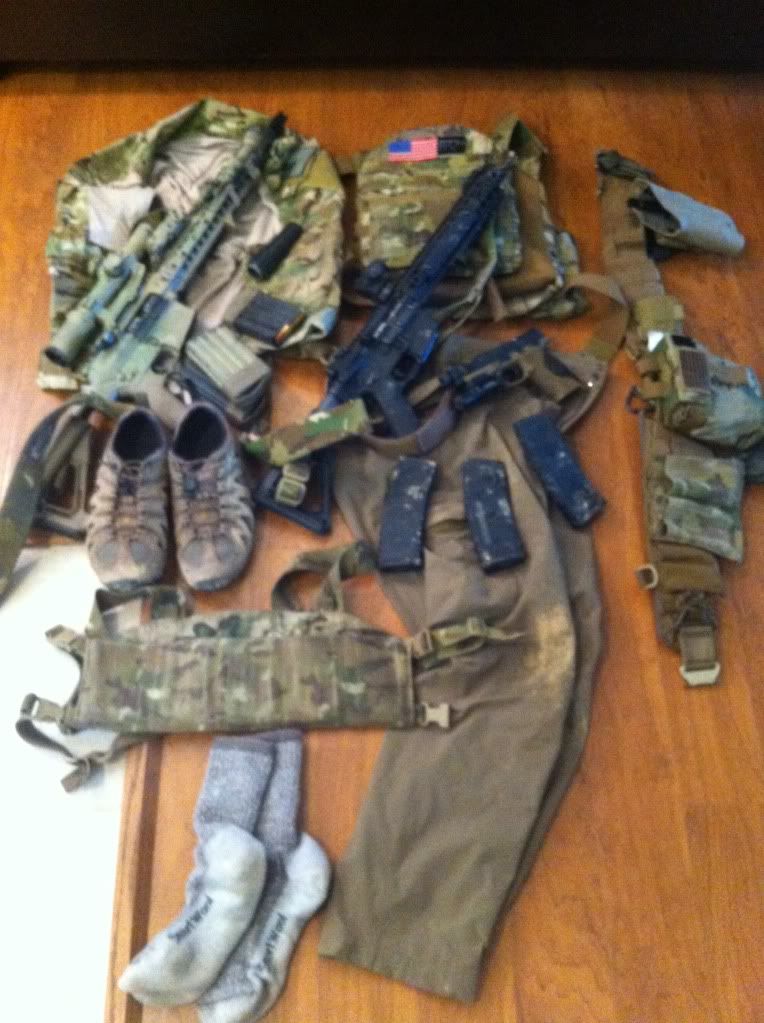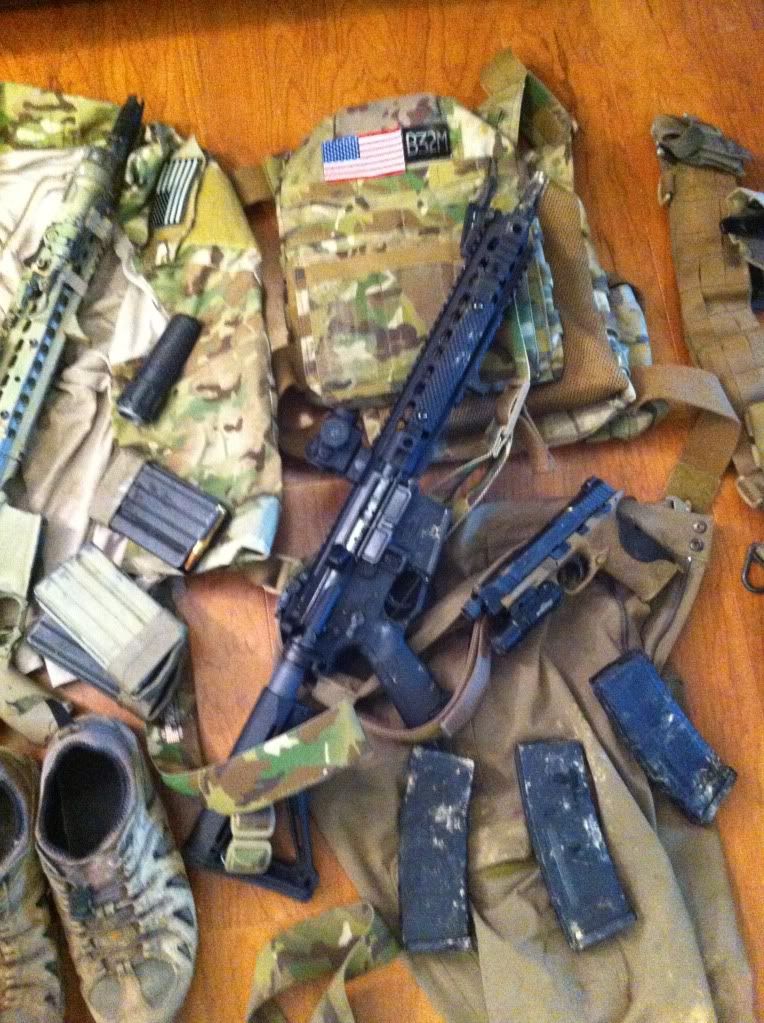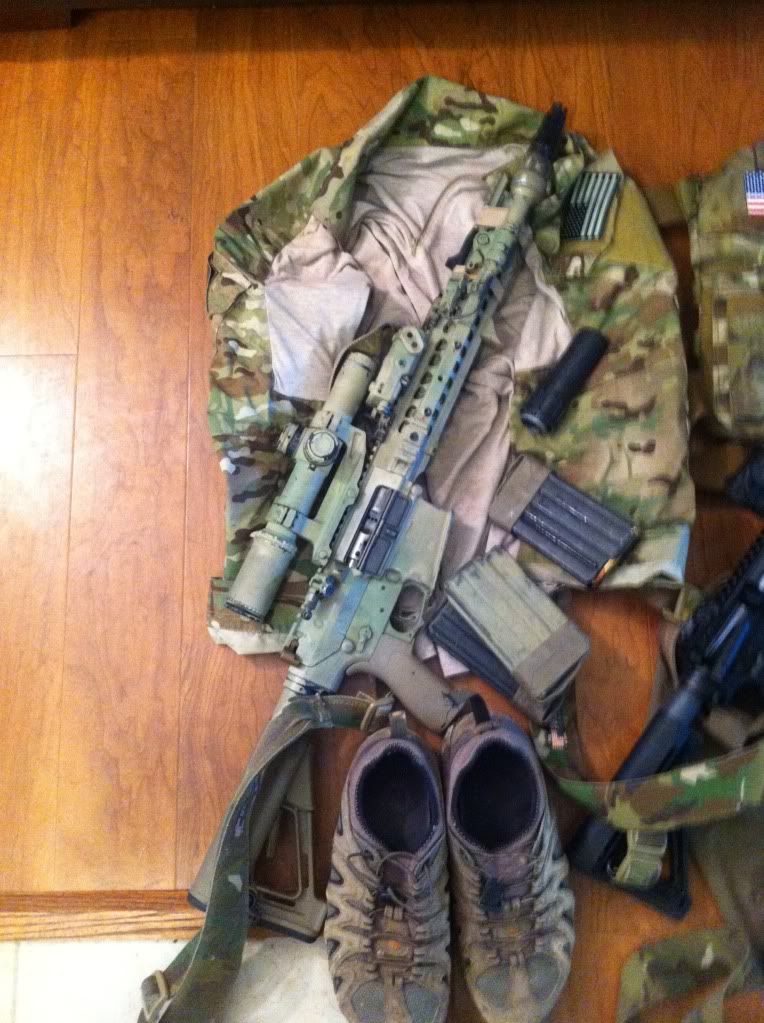- Reaction score
- 16,618
- Points
- 1,260
While nothing really to do with the CF...
Jason Falla is a former SASR guy, and he speaks very highly of the guys from CANSOF, even the CSOR guys (who apparently did very well in Jordan recently in their Warrior Competition)
Having attended a number of classes from trainers over the past 15 years (note for ARMY.CA folks, I mean courses outside the Mil) , I will say that while it was only a 2 day class, I think that this is the best class I have attended.
Reason for that are as follows, while many Instructors have good command of their subject matter, REDBACK ONE (hereafter RB1) offers both a comprehensive knowledge, and a very logical approach. RB1’s mantra is SEAR (Speed, Efficiency, Accuracy and Repetition). Rationale based upon it takes 10,000hrs to truly mater a skill and become unconsciously competent on a skill. Furthermore, unlike most shooting packages, Jason does not just focus on shooting, but delves into mindset (which is not unique) but tactical medicine, both improvised and dedicated.
TD1 started at 0800, I was late (I had been waiting on a package from FedEx who did not arrive at the prescribed timing), so I missed the first few drills. However I arrived and quickly was fit into the class (and I apologize to the class and Jason for my delay). Quickly I realized that this was an advanced class, not an ‘advanced’ class, an there were no wasted opportunities to increase training.
Drills where varied, however there were no “one dimensional drills”, all of the drills where designed to incorporate multiple training lessons. It has been proven time and time again, that learning occurs best under stress, so time, complexity of drills where part of the events.
I don’t want to explain all of his drills but give a rough idea of the training:
Some sprint to the firing line drills, then engaging a sequence of targets (that where explained at the briefing), which raised our heart rate and made us also focus on a variety of complex targets that variety in size and location, forcing the shooting to both stabilize his breathing ( and a technique that Jason explained to very effectively do that), pick out the targets and determine the level of precision required to get a hit for the required target.
Various Cadence drills, from a given location to engage targets in a time sequence with 6 rounds, then on to stoppage drills.
In the stoppage drills, this was the first time I have seen a very logical “flow chart” process that is streamlined to bring the primary back into the fight. Procedures that where seamless either during day or night. For we went into the night. I knew that the night was going to screw with folks, it always does, and no matter how good you are, unless you can see fully at night, it does cause issues. Prior to the night iterations, Jason gave a very complete brief on Tactical Medicine. Focus from a TCCC standpoint (Tactical Combat Casualty Care for those unfamiliar), and how from the TCCC standpoint, the ABC’s of standard First Aid, are backwards. Now this was slightly different from how I was taught when I was in the Canadian Army. We had seen that the ABC’s where wrong from a trauma care standpoint, but had simply added Deadly Bleeding in-front of the ABC’s. Jason explained why Circulation was paramount – as it incorporated Deadly Bleeding, but that breathing was more important than airway. Looking back, it was no different than what I had seen from TCCC, both in the Canadian Army, and US Army Training, I had while contracting in Iraq with DoD. The difference was the explanation was done from an experienced Special Operations Medic, with a well thought out logical program (going back to his Speed, Efficiency, Accuracy and Repetition mantra) and the program is certified here in the US. He also delved into situational awareness and mindset aspects for the armed civilian (this was on open course). While one may strap on a gun to go to the mall, how many had TQ’s or QuikClot?
All the more poignant given war has come to America again (Boston Marathon Bombing, and subsequent shootouts), and sadly is not likely to leave as our enemies have seen what a soft target we are.
Thus ‘field expedient’ materials where covered, and then yes tested.
For the night time, the majority of drills where variations of the day program, with additional discussion and demonstration of the use of lights. Stoppage drills at night suck period, and yet using the methodology that Jason explained and had us practice during the day reduced the complexity and was the easiest and fastest method I have seen used.
TD1 ended at 2330, and we were tired, definitely a full day of training.
TD2 started at 830 on the range. Primary Weapon shoulder transitions where covered, with the most efficient method of transition I have seen covered. I have been instructed in a number of ways to do this, however I will say that some are either slow, or not tactically sound. Prior to this, I had been switch shoulder transitioning retaining the weapon in my primary hands, it’s the fastest method I have found, and allows me to use the muscle memory I have, however it does not allow me to shift my weight or pivot very well. Stoppages while using the support side where also addressed. Now I here I had a huge advantage, as the KAC guns I was shooting have both an ambidextrous magazine and bolt release, something I had been kind of blasé on prior. We then moved into shooting on the move, and shoulder transitions on the move. From there it was on to turns. Then disabled arm drills, and stoppage drills with one arm with the primary. It summed up with a team drill incorporating the majority of the lessons. Total Round count for the class was around 550 rds. of carbine, and 200rds of pistol by my count (and others seemed to agree)
As I mentioned before I have been intentionally a little lite on the description of the drills, RB1 has a number of drills on their website and Facebook page which can give you an idea. One thing I want to point out is that Jason not just demonstrated all the drills, and the standard required (both time and accuracy) but he did the vast majority of the drills in body armor and helmet. He also gave a lot of great info about core stability, stretching and general physical fitness. Several entities I know have spoken very favorably about their training sessions with RB1, and I can see why. I will say that I do plan on doing a lot more training with them.
Edit: added pictures of my gear loadout, I shot a few drills with my SR-25 ECC both suppressed and unsuppressed, but majority was fired with 11.5" SR-16E3 CQB.



Aprox 500 rds fired thru the 11.5" - it was also demo'ed at night after TD1 had 'finished" as part of a flash test.





2 min wipe (and why I am a FIREClean convert)

Jason Falla is a former SASR guy, and he speaks very highly of the guys from CANSOF, even the CSOR guys (who apparently did very well in Jordan recently in their Warrior Competition)
Having attended a number of classes from trainers over the past 15 years (note for ARMY.CA folks, I mean courses outside the Mil) , I will say that while it was only a 2 day class, I think that this is the best class I have attended.
Reason for that are as follows, while many Instructors have good command of their subject matter, REDBACK ONE (hereafter RB1) offers both a comprehensive knowledge, and a very logical approach. RB1’s mantra is SEAR (Speed, Efficiency, Accuracy and Repetition). Rationale based upon it takes 10,000hrs to truly mater a skill and become unconsciously competent on a skill. Furthermore, unlike most shooting packages, Jason does not just focus on shooting, but delves into mindset (which is not unique) but tactical medicine, both improvised and dedicated.
TD1 started at 0800, I was late (I had been waiting on a package from FedEx who did not arrive at the prescribed timing), so I missed the first few drills. However I arrived and quickly was fit into the class (and I apologize to the class and Jason for my delay). Quickly I realized that this was an advanced class, not an ‘advanced’ class, an there were no wasted opportunities to increase training.
Drills where varied, however there were no “one dimensional drills”, all of the drills where designed to incorporate multiple training lessons. It has been proven time and time again, that learning occurs best under stress, so time, complexity of drills where part of the events.
I don’t want to explain all of his drills but give a rough idea of the training:
Some sprint to the firing line drills, then engaging a sequence of targets (that where explained at the briefing), which raised our heart rate and made us also focus on a variety of complex targets that variety in size and location, forcing the shooting to both stabilize his breathing ( and a technique that Jason explained to very effectively do that), pick out the targets and determine the level of precision required to get a hit for the required target.
Various Cadence drills, from a given location to engage targets in a time sequence with 6 rounds, then on to stoppage drills.
In the stoppage drills, this was the first time I have seen a very logical “flow chart” process that is streamlined to bring the primary back into the fight. Procedures that where seamless either during day or night. For we went into the night. I knew that the night was going to screw with folks, it always does, and no matter how good you are, unless you can see fully at night, it does cause issues. Prior to the night iterations, Jason gave a very complete brief on Tactical Medicine. Focus from a TCCC standpoint (Tactical Combat Casualty Care for those unfamiliar), and how from the TCCC standpoint, the ABC’s of standard First Aid, are backwards. Now this was slightly different from how I was taught when I was in the Canadian Army. We had seen that the ABC’s where wrong from a trauma care standpoint, but had simply added Deadly Bleeding in-front of the ABC’s. Jason explained why Circulation was paramount – as it incorporated Deadly Bleeding, but that breathing was more important than airway. Looking back, it was no different than what I had seen from TCCC, both in the Canadian Army, and US Army Training, I had while contracting in Iraq with DoD. The difference was the explanation was done from an experienced Special Operations Medic, with a well thought out logical program (going back to his Speed, Efficiency, Accuracy and Repetition mantra) and the program is certified here in the US. He also delved into situational awareness and mindset aspects for the armed civilian (this was on open course). While one may strap on a gun to go to the mall, how many had TQ’s or QuikClot?
All the more poignant given war has come to America again (Boston Marathon Bombing, and subsequent shootouts), and sadly is not likely to leave as our enemies have seen what a soft target we are.
Thus ‘field expedient’ materials where covered, and then yes tested.
For the night time, the majority of drills where variations of the day program, with additional discussion and demonstration of the use of lights. Stoppage drills at night suck period, and yet using the methodology that Jason explained and had us practice during the day reduced the complexity and was the easiest and fastest method I have seen used.
TD1 ended at 2330, and we were tired, definitely a full day of training.
TD2 started at 830 on the range. Primary Weapon shoulder transitions where covered, with the most efficient method of transition I have seen covered. I have been instructed in a number of ways to do this, however I will say that some are either slow, or not tactically sound. Prior to this, I had been switch shoulder transitioning retaining the weapon in my primary hands, it’s the fastest method I have found, and allows me to use the muscle memory I have, however it does not allow me to shift my weight or pivot very well. Stoppages while using the support side where also addressed. Now I here I had a huge advantage, as the KAC guns I was shooting have both an ambidextrous magazine and bolt release, something I had been kind of blasé on prior. We then moved into shooting on the move, and shoulder transitions on the move. From there it was on to turns. Then disabled arm drills, and stoppage drills with one arm with the primary. It summed up with a team drill incorporating the majority of the lessons. Total Round count for the class was around 550 rds. of carbine, and 200rds of pistol by my count (and others seemed to agree)
As I mentioned before I have been intentionally a little lite on the description of the drills, RB1 has a number of drills on their website and Facebook page which can give you an idea. One thing I want to point out is that Jason not just demonstrated all the drills, and the standard required (both time and accuracy) but he did the vast majority of the drills in body armor and helmet. He also gave a lot of great info about core stability, stretching and general physical fitness. Several entities I know have spoken very favorably about their training sessions with RB1, and I can see why. I will say that I do plan on doing a lot more training with them.
Edit: added pictures of my gear loadout, I shot a few drills with my SR-25 ECC both suppressed and unsuppressed, but majority was fired with 11.5" SR-16E3 CQB.



Aprox 500 rds fired thru the 11.5" - it was also demo'ed at night after TD1 had 'finished" as part of a flash test.





2 min wipe (and why I am a FIREClean convert)


